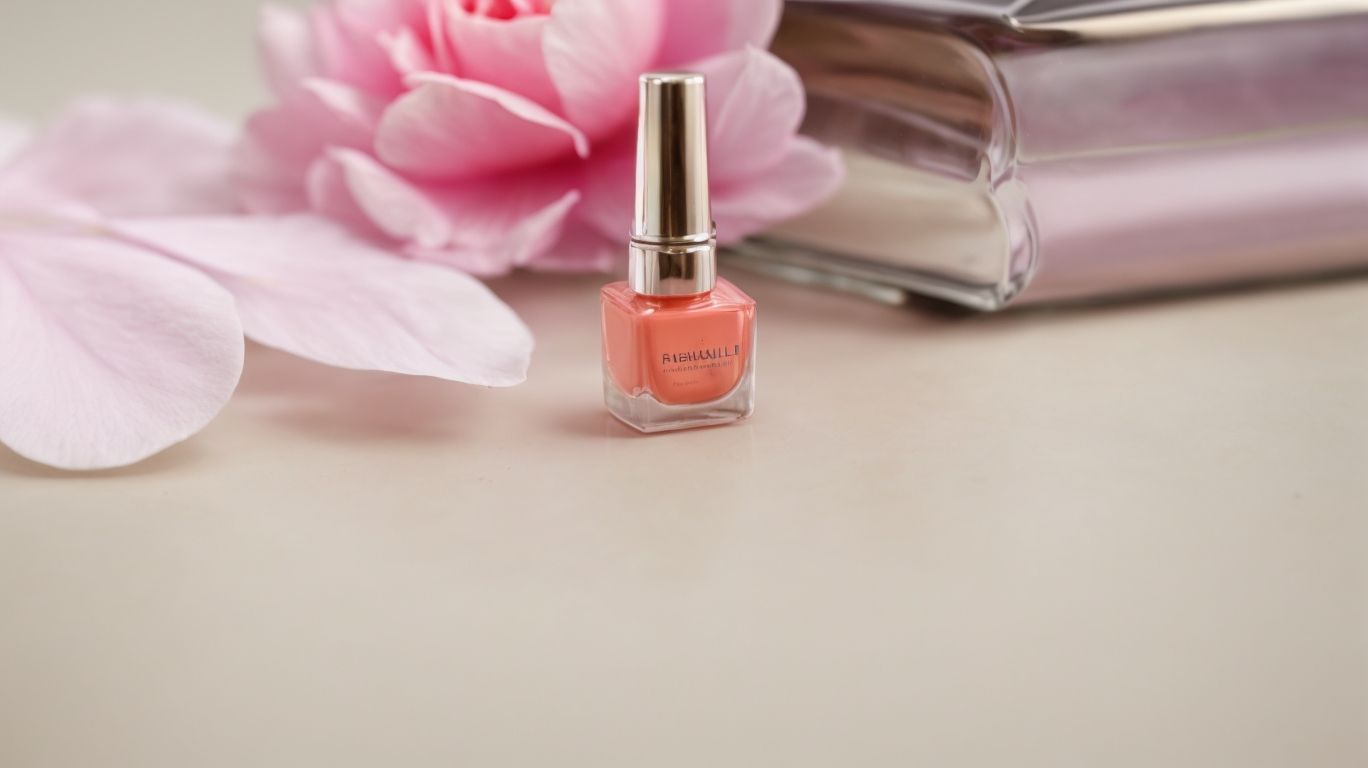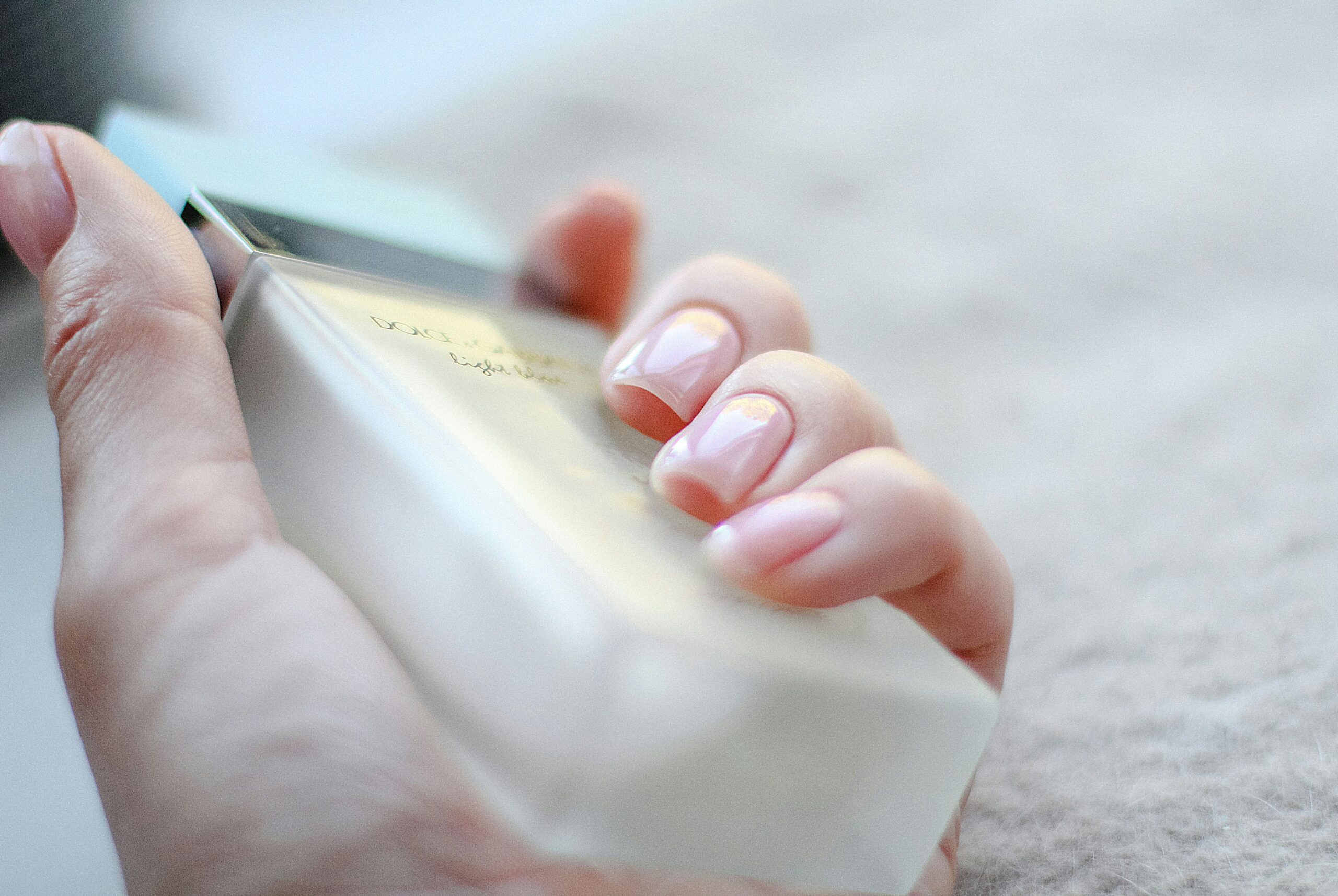Are you confused about the difference between gel and nail polish? In this article, we will break down the key distinctions between these two popular nail products. From the application process to durability and cost, we will explore how gel and nail polish stack up against each other.
Whether you’re looking to enhance your nail goals, fit your lifestyle, or stay within your budget, we’ll help you decide which option is better for your nails. Stay tuned to learn more!
What Is Gel?
Gel, often used in the form of gel nail varnish, is a type of nail enhancement that requires curing under a UV light to harden and set. In comparison to acrylic nails, gel nails offer a different consistency and shine.
Gel nail varnish typically consists of a combination of oligomers and monomers that form a thick, durable layer when cured. This composition gives gel varnish its chip-resistant qualities and long-lasting finish.
The application process involves layers of gel being applied to the natural nail and then each layer being cured under a UV light for a specific period. The UV light activates the photo initiators in the gel, causing it to harden and adhere to the nail. This curing process ensures a smooth and glossy finish that lasts longer than traditional nail varnish.
As opposed to acrylic nails, gel nails are known for their flexibility and natural appearance, making them a popular choice for those looking for a more natural-looking and lightweight option.
What Is Nail Polish?
Nail varnish is a cosmetic product applied to nails during a manicure, typically available in a wide range of colours and shades. Unlike gel polish, regular nail varnish does not require curing and comes in various formulas and finishes.
The popularity of nail varnish dates back to ancient times, where it was used by different civilisations for both adornment and protection.
Today, nail varnish is a staple in many beauty routines, offering a quick and easy way to add a pop of colour to your nails. Whether you prefer classic reds and pinks or trendy metallics and neons, there is a shade to suit every mood and occasion.
With advances in technology, nail varnish formulas now come in options that are quick-drying, chip-resistant, and long-lasting, giving you endless possibilities for creating unique nail looks.
How Are Gel and Nail Polish Different?
The difference between gel and nail varnish lies in their application, longevity, and appearance. Gel varnish tends to be more chip-resistant and offers enhancements like a protective layer, while regular varnish provides a wide array of colours and shades.
Gel varnish typically lasts longer than regular nail varnish, making it a popular choice for those seeking extended wear without frequent touch-ups. The application process for gel varnish involves curing under a UV or LED lamp, resulting in a durable finish that can withstand daily activities with minimal chipping.
On the other hand, regular nail varnish, while offering an extensive range of colours, may require more frequent touch-ups due to its tendency to chip and fade quicker than gel varnish. The aesthetics of gel varnish also tend to be more glossy and vibrant, enhancing the overall look of the nails compared to the slightly softer finish of regular varnish.
Application Process
The application process for gel and nail varnish varies depending on whether it is done at a salon by a professional or at home as a DIY project. The salon application typically involves meticulous steps carried out by trained professionals.
The precision required in a salon setting ensures a flawless finish, with technicians carefully shaping and buffing nails before applying the gel or varnish. In contrast, at-home applications offer more convenience but may lack the expert touch of a salon visit.
DIY enthusiasts can start by prepping their nails, applying a base coat, followed by layers of gel or varnish, and finishing off with a topcoat. While salon treatments provide a pampering experience, home-based methods allow for experimentation and customisation in the comfort of one’s own space.
Drying Time
Drying time is a key differentiator between gel and nail varnish. While nail varnish air-dries, gel requires curing under a specialised lamp due to its chemical composition, resulting in a quicker and smudge-free finish.
The use of curing lamps is crucial in the gel varnish application process as it initiates a chemical reaction that hardens and sets the gel varnish efficiently. The wavelengths emitted by these lamps activate photoinitiators present in the gel, accelerating the drying process. Proper application techniques such as thin, even layers are also essential to ensure thorough curing and longevity of the manicure. Understanding the interplay between the chemical composition of gel varnishes and the curing process is vital for achieving salon-quality results at home.
Durability
Durability is a significant factor when comparing gel and nail varnish. Gel nails typically offer greater longevity and chip resistance compared to traditional nail varnish, requiring less maintenance for a long-lasting finish.
Gel nails are known for their ability to withstand daily activities without chipping or fading easily, making them a popular choice for individuals seeking durable manicures. The gel formula used in these nails hardens under UV light, creating a strong bond that can last for several weeks.
On the other hand, traditional nail varnish may require frequent touch-ups and protective top coats to maintain their appearance, as they are more prone to chipping and peeling. Understanding the differences in durability between gel nails and nail varnish is crucial for making an informed decision on the best option for your nail care routine.
Removal Process
The removal process for gel and nail varnish differs significantly. While regular nail varnish can be easily removed with acetone-based removers, gel varnish requires a soak-off process using acetone to dissolve the gel layers for safe removal.
To start the removal of gel varnish using the soak-off method, you will need to first file the shiny layer of the gel to allow the acetone to penetrate more effectively. After filing, soak cotton balls in acetone and place them individually on each nail, wrapping them with aluminium foil to create a barrier and enhance the soaking process. It is important to let the nails soak for about 10-15 minutes to ensure the gel varnish is properly softened before gently wiping it off to avoid damaging the natural nail underneath.
Cost
Cost is a consideration when choosing between gel and nail varnish treatments. While salon visits for gel applications can be more expensive, at-home nail varnish options offer a cost-effective and convenient self-care alternative, albeit being more time-consuming.
- Salon visits for gel applications often come with a premium price tag due to the specialised equipment and expertise required. The costs can add up, especially with regular appointments needed to maintain the gel finish.
- On the other hand, opting for at-home nail varnish treatments allows for significant savings in the long run. DIY nail varnish kits and regular polishes are affordable options that provide flexibility in terms of timing and application. While they may require more effort and time, the budget-friendly nature makes them a popular choice for many individuals looking to maintain polished nails without breaking the bank.
Which One Is Better for Your Nails?
When considering nail varnish depends on factors such as UV exposure, impact on natural nails, and potential health concerns associated with artificial enhancements.
Gel manicures are popular for their durability and chip-resistant qualities, but they involve exposure to UV light during the curing process, which can increase the risk of skin damage and potential long-term issues like premature aging and skin cancer.
Nail varnish, on the other hand, may not require UV exposure for drying, making it a safer option in terms of UV radiation. Frequent use of nail varnish can lead to discoloration, weakening, and drying out of natural nails, affecting their overall health and strength.
Gel
Gel nails can serve as a beneficial nail treatment option, offering protection and durability. Concerns about UV exposure during the curing process and the time required for polymerisation should be considered for optimal nail health.
The protective qualities of gel nails make them a popular choice among individuals seeking long-lasting and resilient manicures. Unlike traditional nail varnish, gel nails provide a robust shield that can help prevent chipping and cracking, ensuring a flawless look for an extended period.
The durability of gel nails allows individuals to enjoy their manicure without constantly worrying about maintenance. Despite concerns about UV exposure during the curing process, advancements in technology have led to the development of LED lamps, which offer a quicker curing time and reduce potential harm from excessive UV exposure.
The polymerisation time can vary depending on the brand and type of gel used, with some products offering rapid setting times for increased convenience.
Nail Polish
Nail varnish can be a versatile option for nail care and self-care routines, enhancing the appearance of nails. It offers a variety of colours and finishes that cater to different aesthetic preferences, contributing to the overall texture and look of the nails.
The texture of nail varnish, whether it’s a glossy finish for a vibrant pop of colour or a matte look for a more understated elegance, allows individuals to express their style and mood.
Nail varnish serves as a form of self-expression and creativity, enabling individuals to experiment with fun designs and nail art.
The act of applying nail varnish can also be a relaxing and therapeutic practice, promoting mindfulness and self-indulgence in the realm of personal care.
Can You Use Gel and Nail Polish Together?
Combining gel and nail polish offers a creative outlet for nail art enthusiasts, allowing for innovative designs and self-expression. The versatility of both products enables unique and personalised nail looks.
By layering gel and nail polish, individuals can experiment with different textures, finishes, and patterns, creating endless possibilities. The use of gel as a base for intricate nail art designs allows for durability and long-lasting wear, while nail polish adds vibrant colors and artistic flair. Mixing and matching gel and polish opens the door to gradient effects, ombre styles, and captivating nail art combinations, showcasing the artist’s ingenuity. Embracing this fusion of gel and polish empowers individuals to unleash their creativity and express their personal style through their nails.
Gel as a Base Coat for Nail Polish
Using gel as a base coat for nail varnish can enhance the flexibility and durability of the manicure. The gel layer provides a smooth foundation for the nail varnish colours to adhere to, extending the longevity of the overall nail look.
The gel base coat creates a protective barrier that shields the natural nail from potential damage caused by external factors such as daily activities, water exposure, and harsh chemicals. This added layer of protection not only helps in preventing chipping and peeling but also contributes to maintaining the vibrancy and richness of the chosen nail varnish shades.
By improving the adherence of the colours, the gel base coat ensures a flawless finish that lasts longer, making it a preferred option for those seeking a salon-quality manicure at home.
Gel as a Top Coat for Nail Polish
Applying gel as a top coat over nail varnish can elevate the finish and shine of the manicure. The protective nature of the gel top coat enhances the overall appearance and longevity of the nail varnish colours.
The gel top coat creates a smooth and glossy surface, giving the nails a professional salon-like look. It helps prevent chipping and peeling, ensuring that the vibrant hues of the nail varnish last longer without fading. The durability of the gel top coat adds a protective shield against everyday wear and tear, making the manicure last for weeks with minimal maintenance required. This results in a polished and flawless finish that stays impeccable for an extended period, making it a popular choice among nail enthusiasts.
Nail Polish as a Top Coat for Gel
Using nail varnish as a top coat over gel can offer additional layering options to enhance the appearance and aesthetics of the manicure. The varying thickness of nail varnish layers can create unique textures and visual effects when applied over gel.
This layering technique opens up a world of creative possibilities, allowing the individual to experiment with different colours, finishes, and even nail art designs. Thicker layers of nail varnish over gel can add depth and dimension to the nails, while thinner layers can create a more delicate and subtle look. By playing with the opacity and consistency of the nail varnish, one can achieve captivating results that vary from glossy and smooth to textured and eye-catching.
How to Choose Between Gel and Nail Polish?
Choosing between gel and nail polish depends on various factors, including your nail goals, lifestyle preferences, budget constraints, and the impact on nail health. Consider these aspects to make an informed decision.
- If you prioritize durability and want a long-lasting manicure, gel polish might be the ideal choice as it can last up to three weeks without chipping.
- On the other hand, traditional nail polish offers a vast array of colours and finishes, perfect for those who enjoy frequent changes in their nail aesthetics.
When assessing budget considerations, keep in mind that gel manicures are typically more expensive upfront but may save you money in the long run due to their longevity. It’s essential to remember that gel polish requires UV light for curing, which may have implications for your nail health in the long term.
Ultimately, analyse your individual preferences and priorities to determine whether gel or nail polish aligns best with your needs.
Your Nail Goals
Understanding your nail goals is crucial in selecting between gel and nail varnish treatments. Whether you aim for long-lasting enhancements or prefer a wide range of colours and shades, aligning with your nail goals is key.
Obviously, if you’re looking for a manicure that will stay flawless for weeks, gel nails are the way to go. The durability and chip-resistant nature of gel manicures make them a popular choice for those with busy lifestyles or who don’t want to worry about frequent touch-ups.
On the other hand, if you love experimenting with different nail colours frequently, traditional nail varnish offers endless options to match your mood, outfit, or the season.
Your Lifestyle
Your lifestyle plays a significant role in determining whether gel or nail varnish is suitable for your routine. While gel may offer longer-lasting results, nail varnish can be a convenient self-care option, considering the time-consuming aspects of each treatment.
The longevity of gel nails is a major draw for those with busy schedules or who prefer a low-maintenance beauty routine.
On the other hand, nail varnish allows for more frequent changes and creativity in expressing personal style without the commitment of gel.
Understanding the time commitments involved in maintaining gel versus traditional nail varnish is essential for choosing the option that aligns best with the demands of your daily life.
Your Budget
Your budget considerations are essential when deciding between gel and nail varnish treatments. While salon visits for gel applications can be more expensive, DIY nail varnish applications offer a cost-effective alternative for budget-conscious individuals.
Salon gel treatments, although long-lasting and professionally applied, can cost significantly more than DIY nail varnish applications done at home. The expense of getting gel nails professionally done can involve not just the application cost but also additional charges for removal and maintenance.
On the other hand, opting for DIY nail varnish allows you to save money on salon fees and gives you the flexibility to change your varnish more frequently without incurring substantial costs.
Your Nail Health
Prioritising your nail health is crucial in the selection process between gel and nail polish. Consider the impact on natural nails, potential risks associated with artificial enhancements, and any health concerns that may arise from prolonged use of either treatment.
When deciding between gel and nail polish treatments, it’s essential to assess how each option affects the health of your nails in the long run. Natural nails can be particularly sensitive to certain chemicals used in gel products, potentially leading to weakening or drying out over time.
On the other hand, frequent application and removal of nail polish may result in discolouration or dehydration of the nail plate. It’s crucial to strike a balance between achieving your desired aesthetic and maintaining the overall health and strength of your nails.




